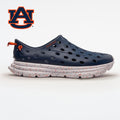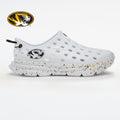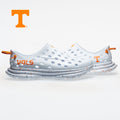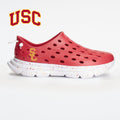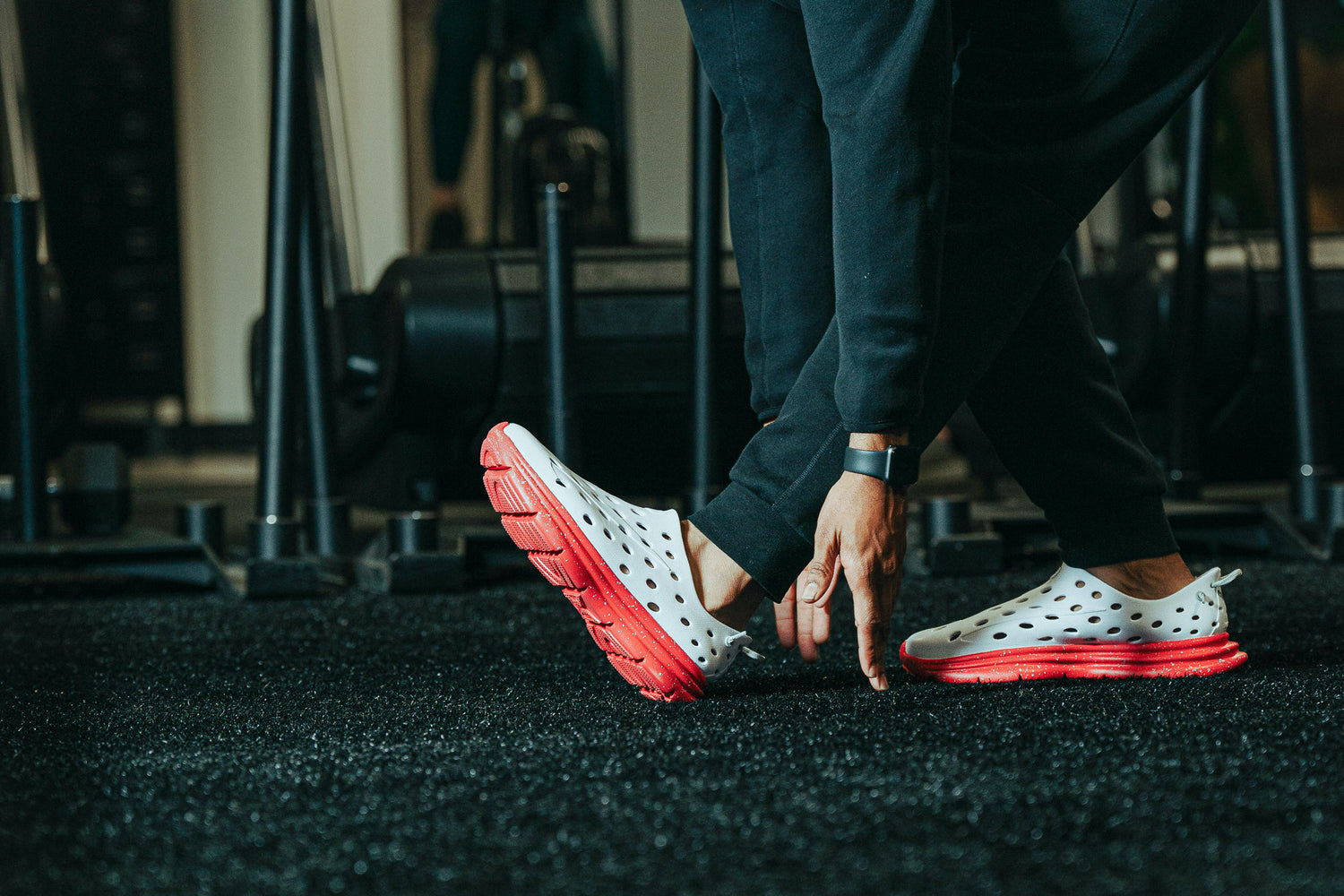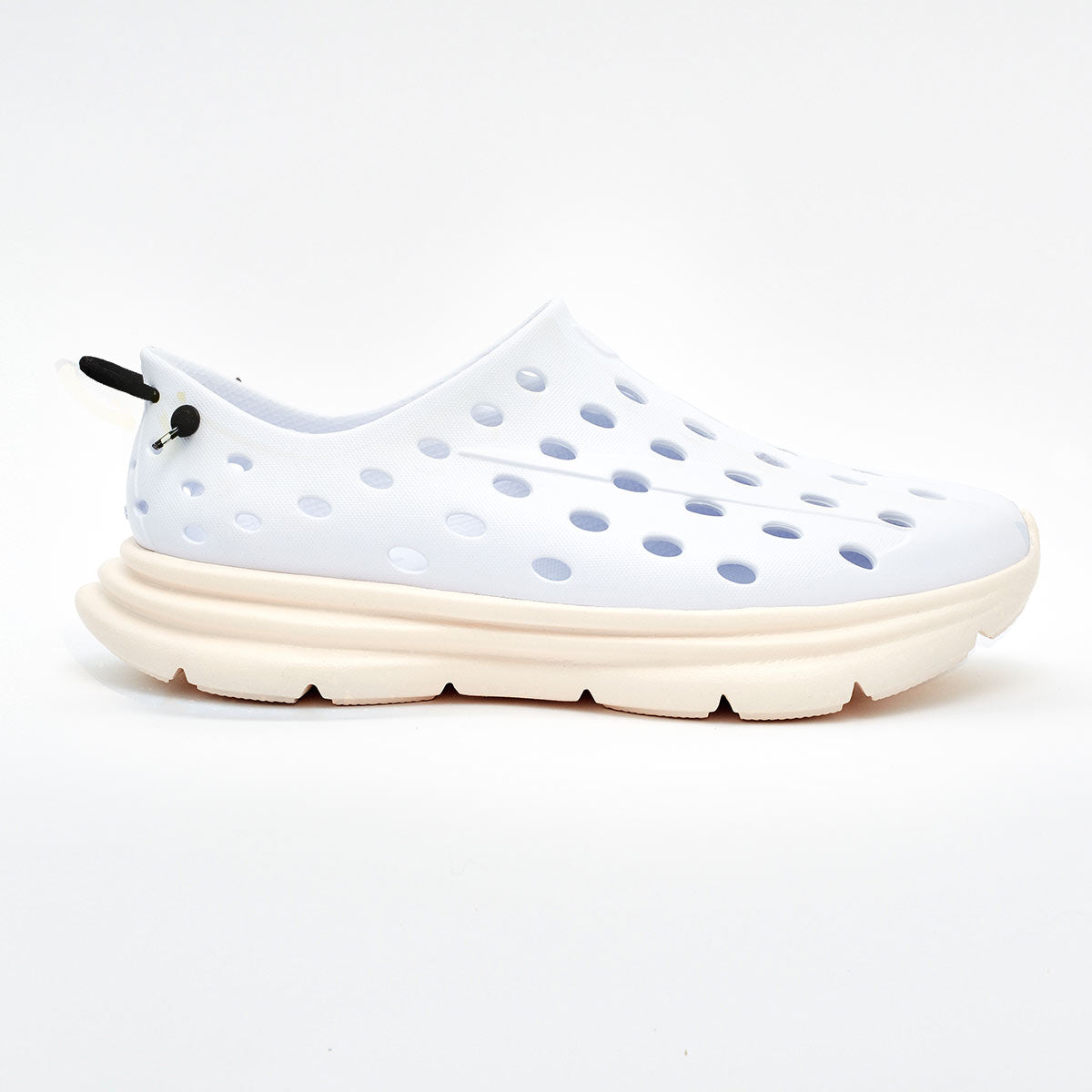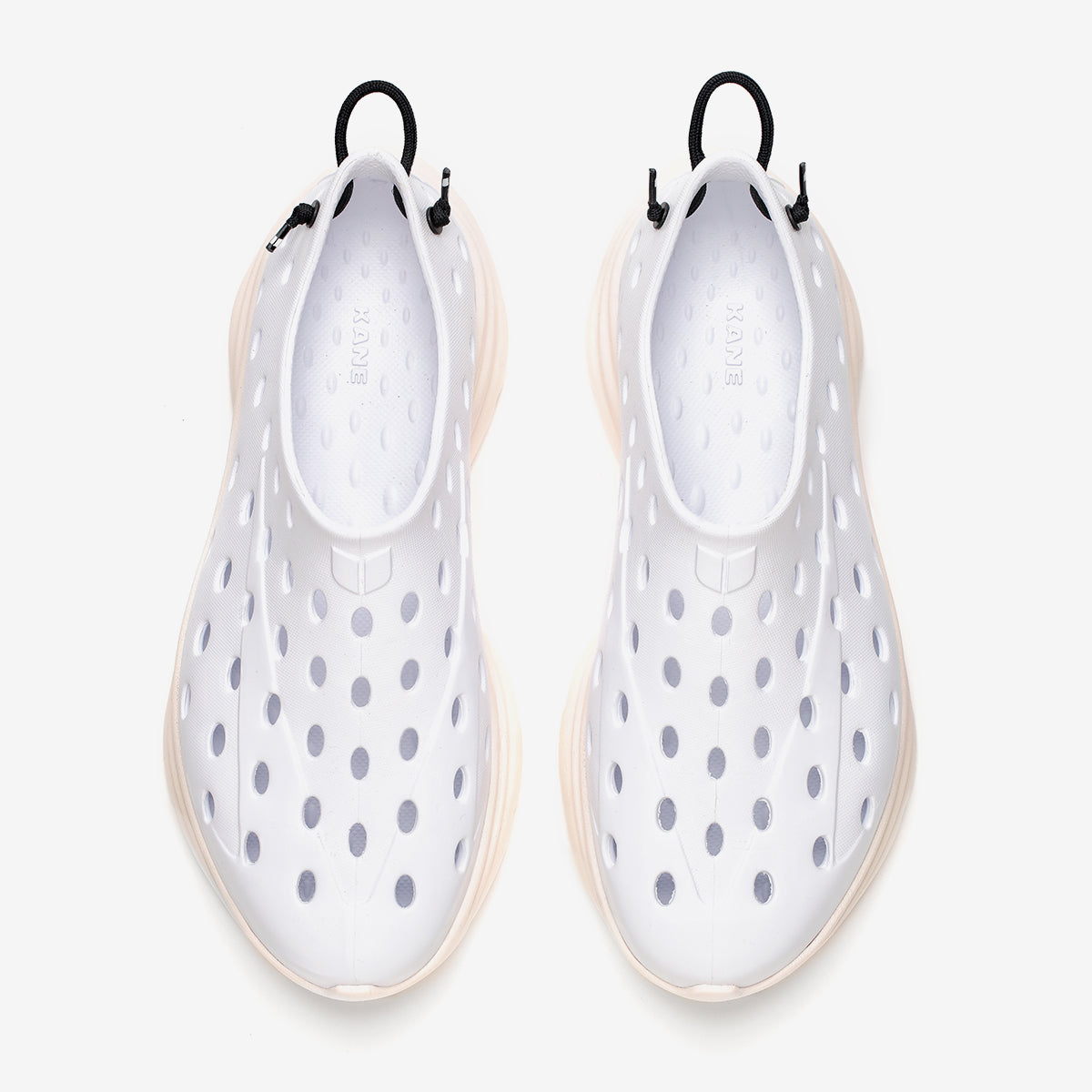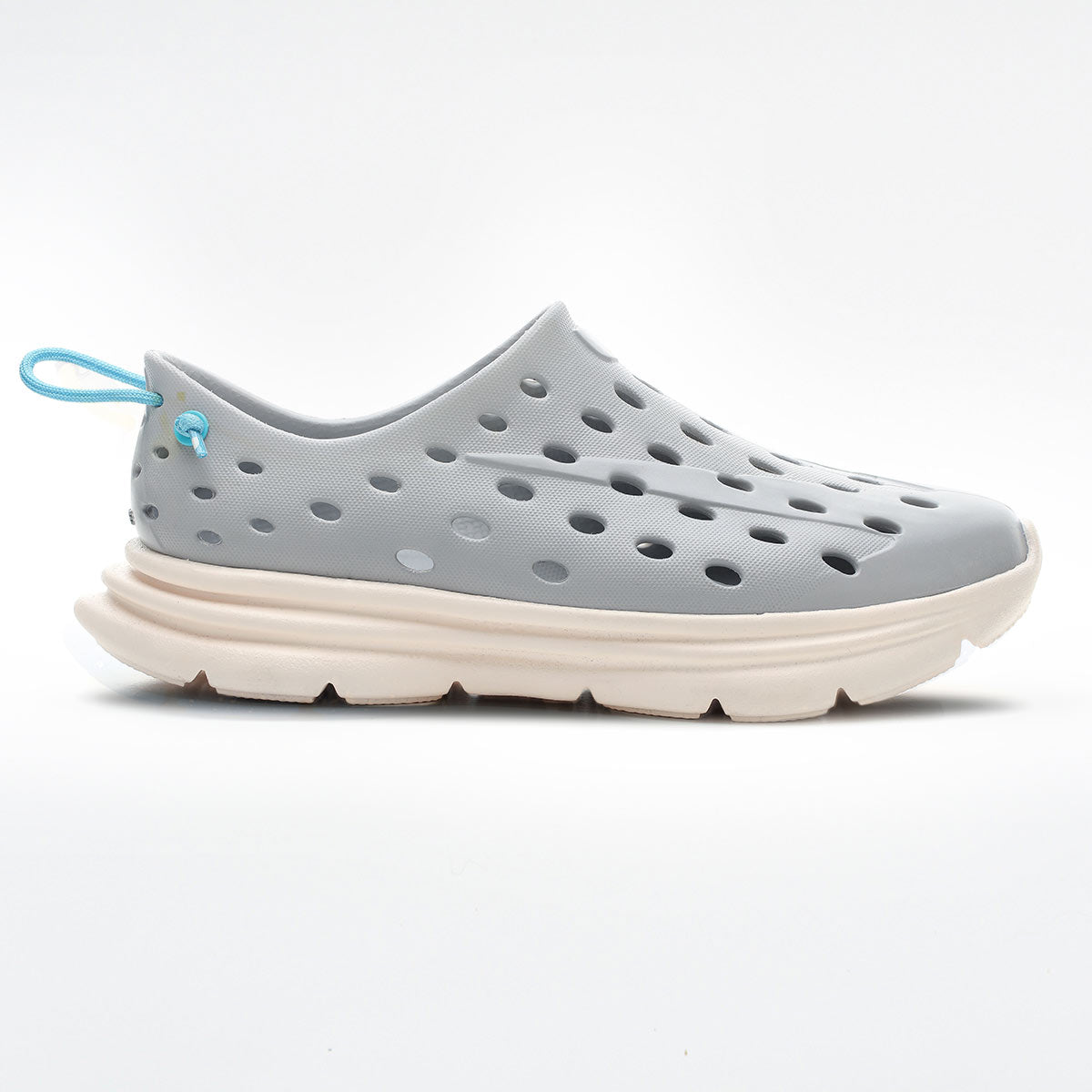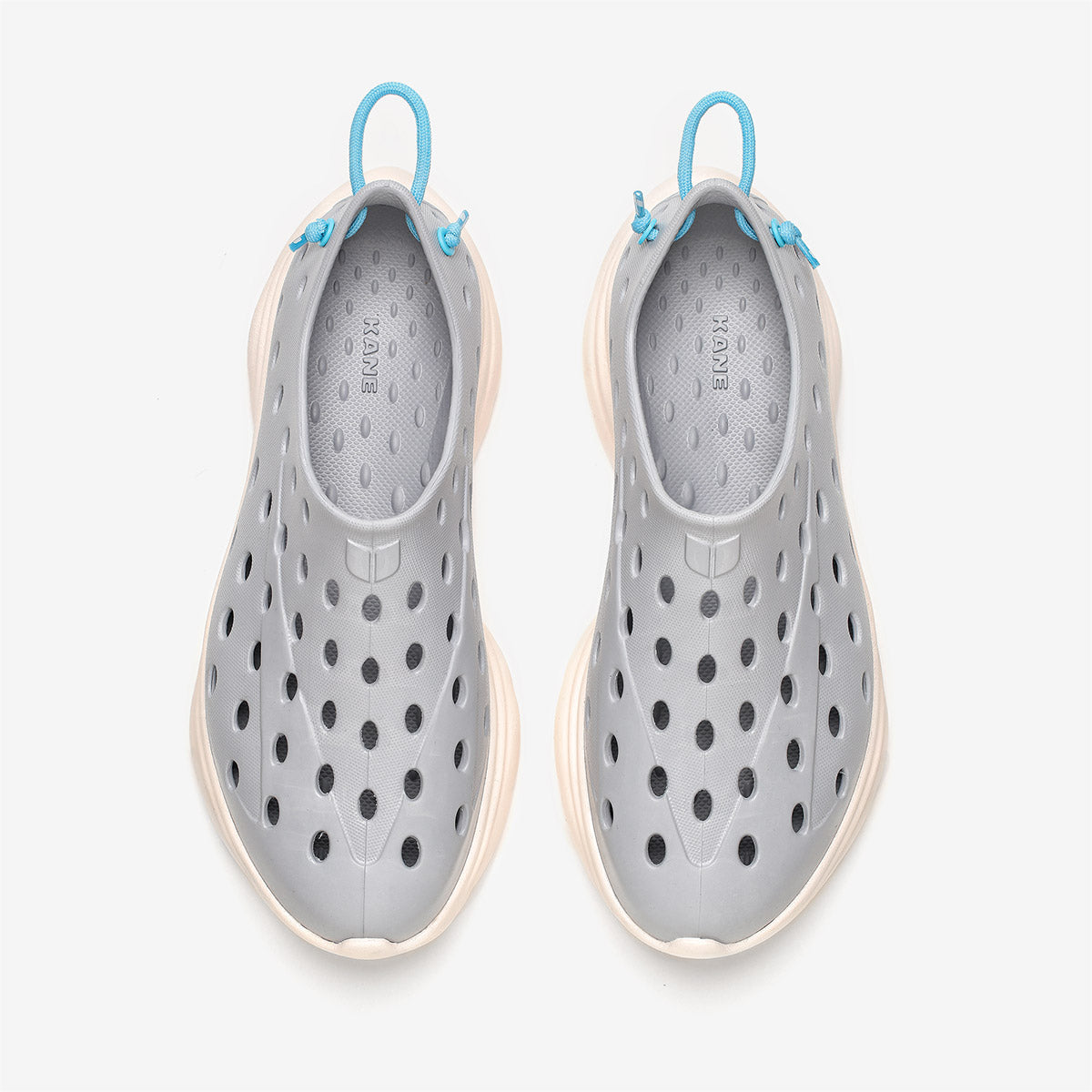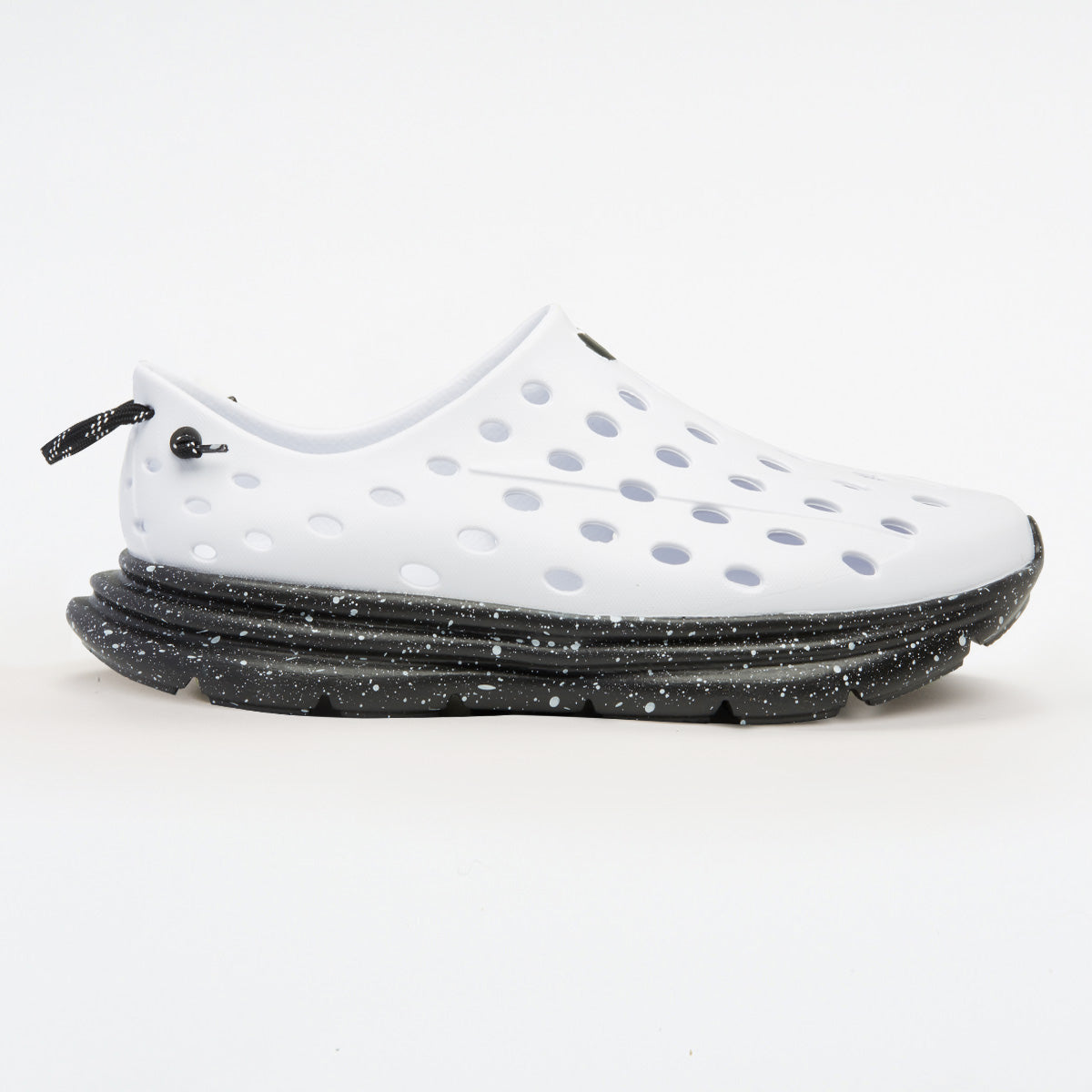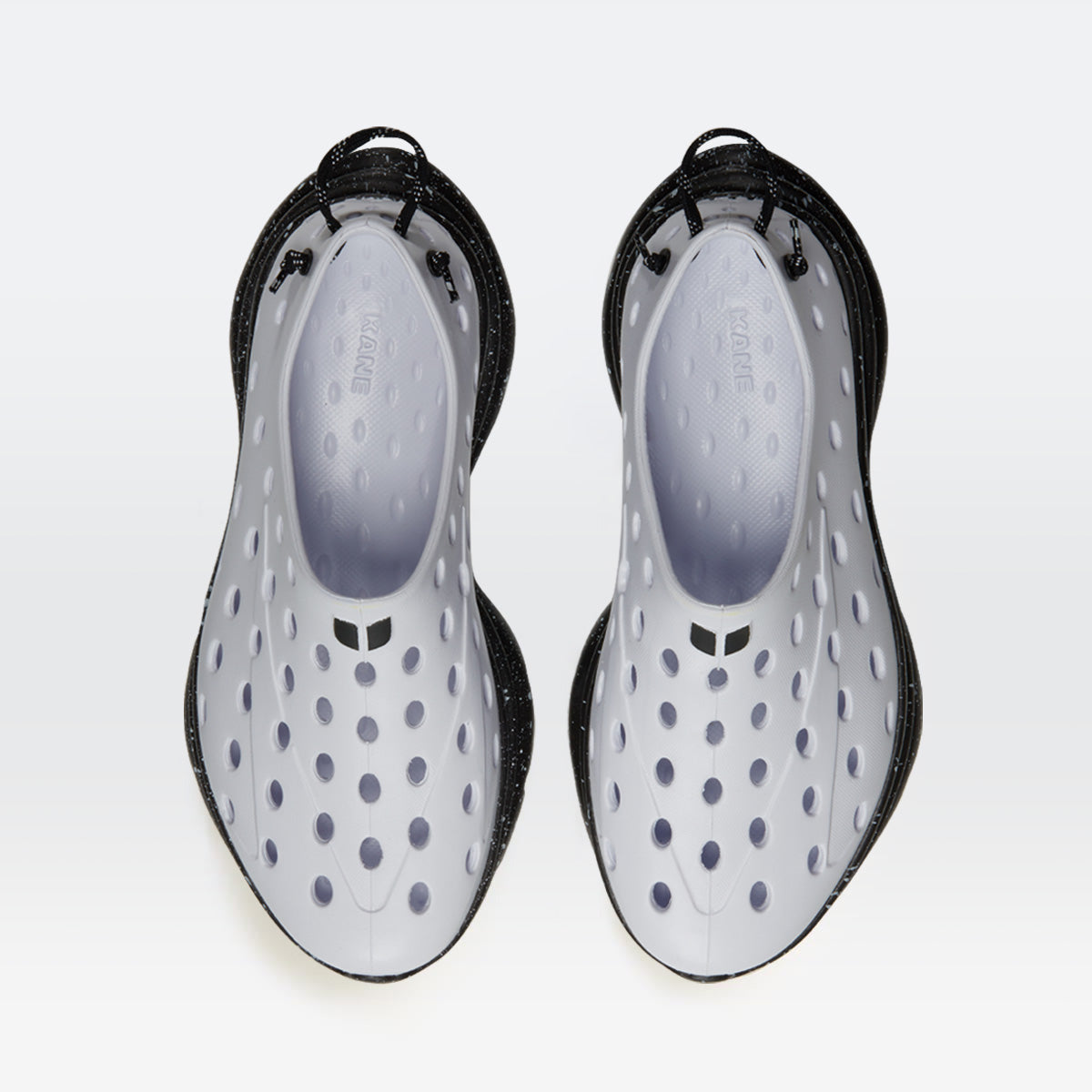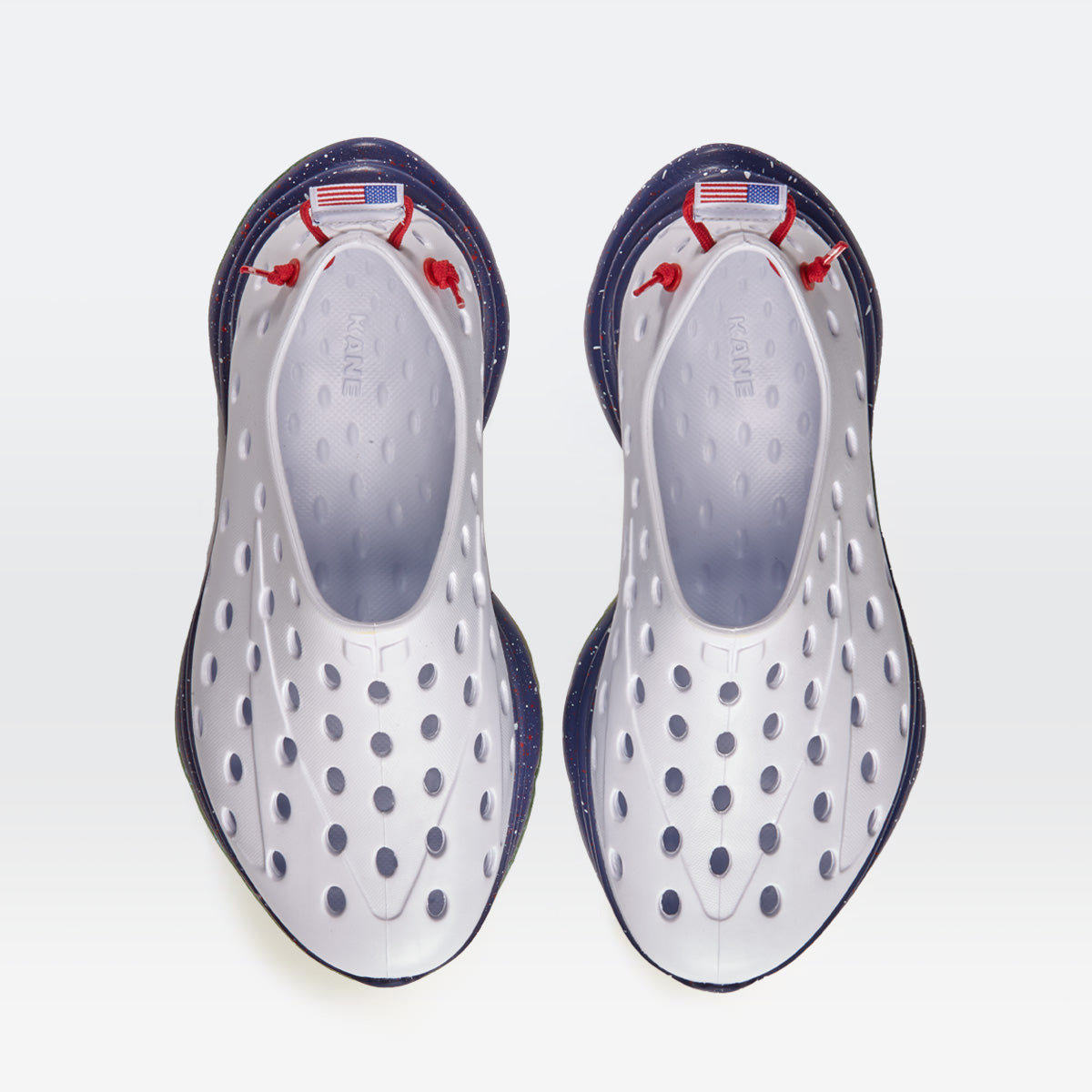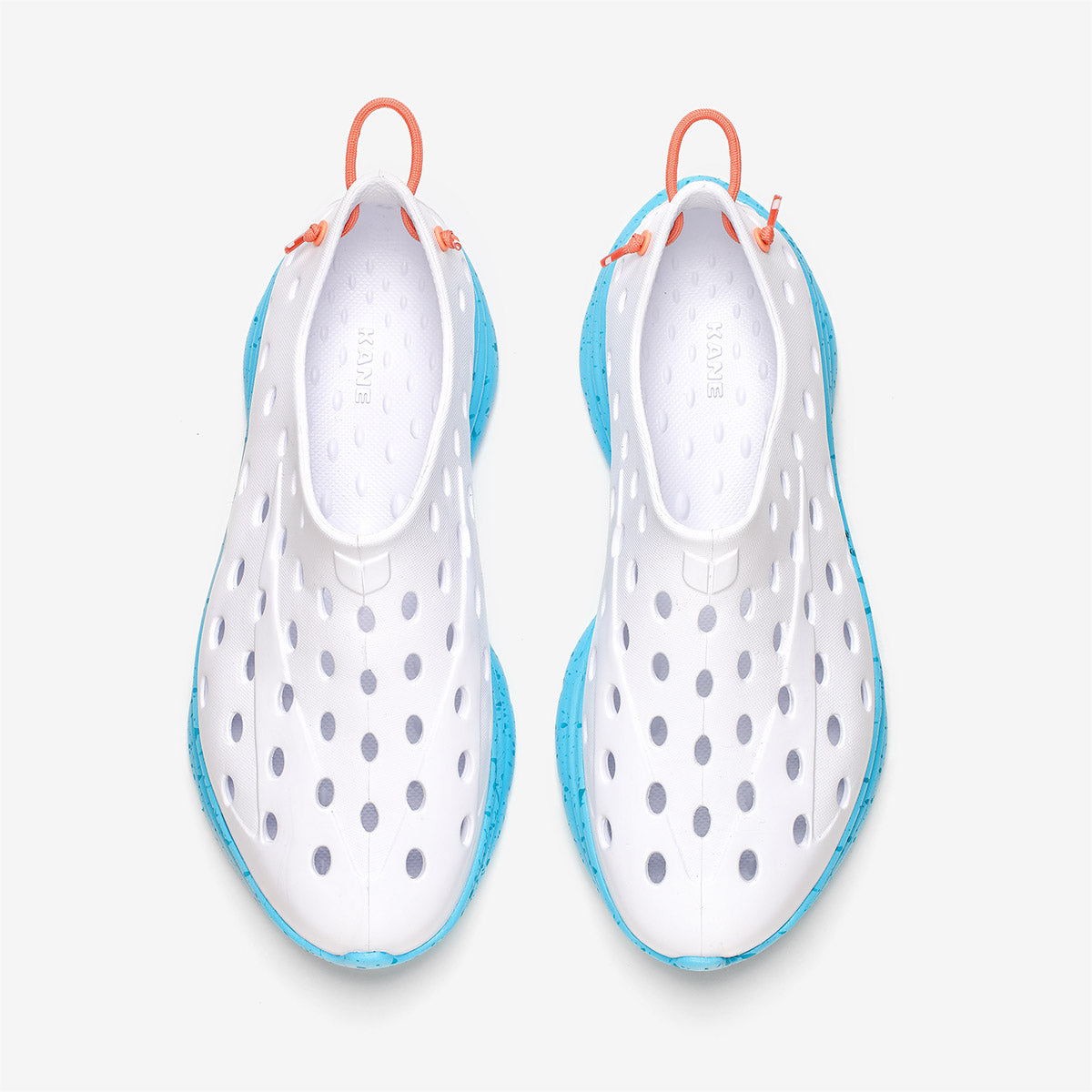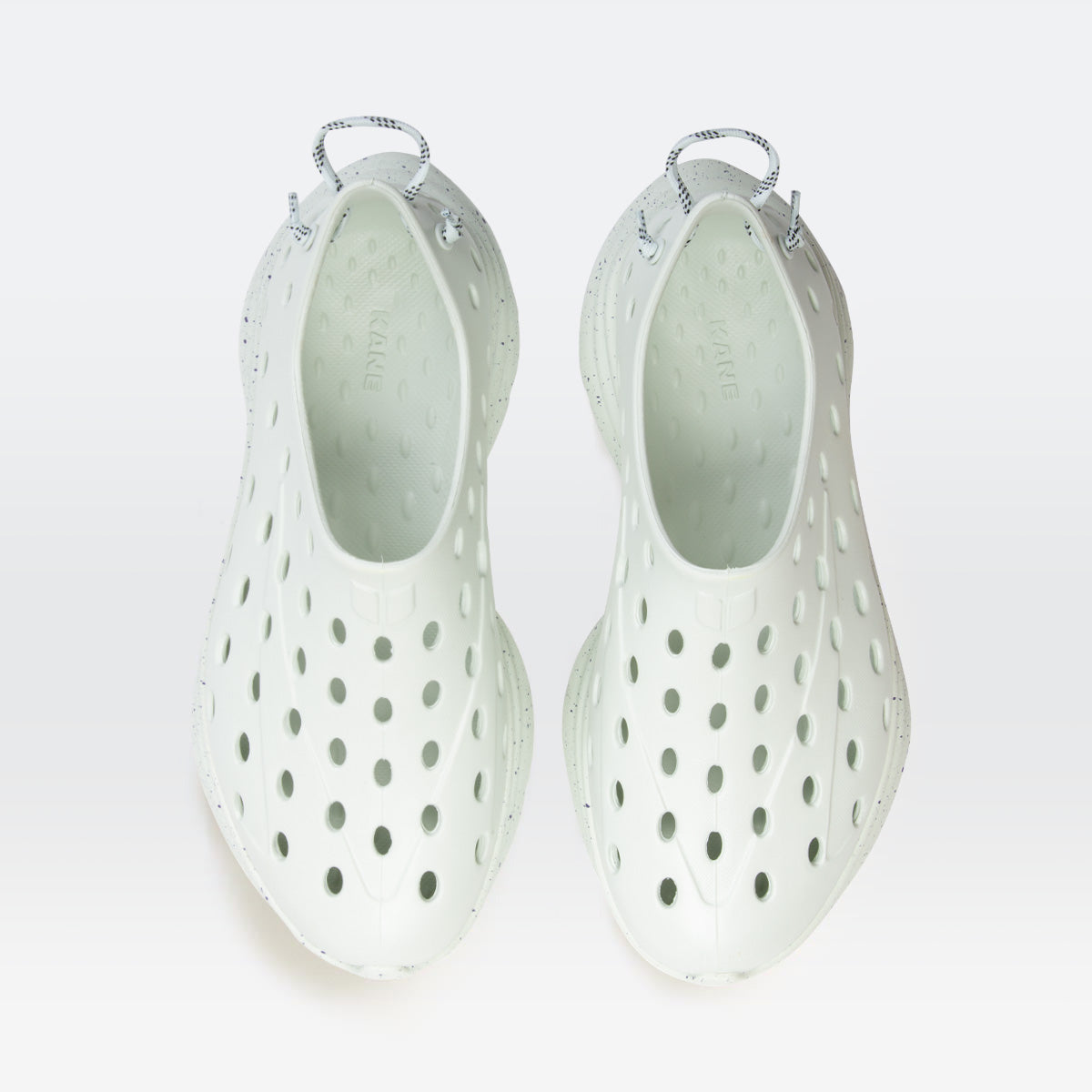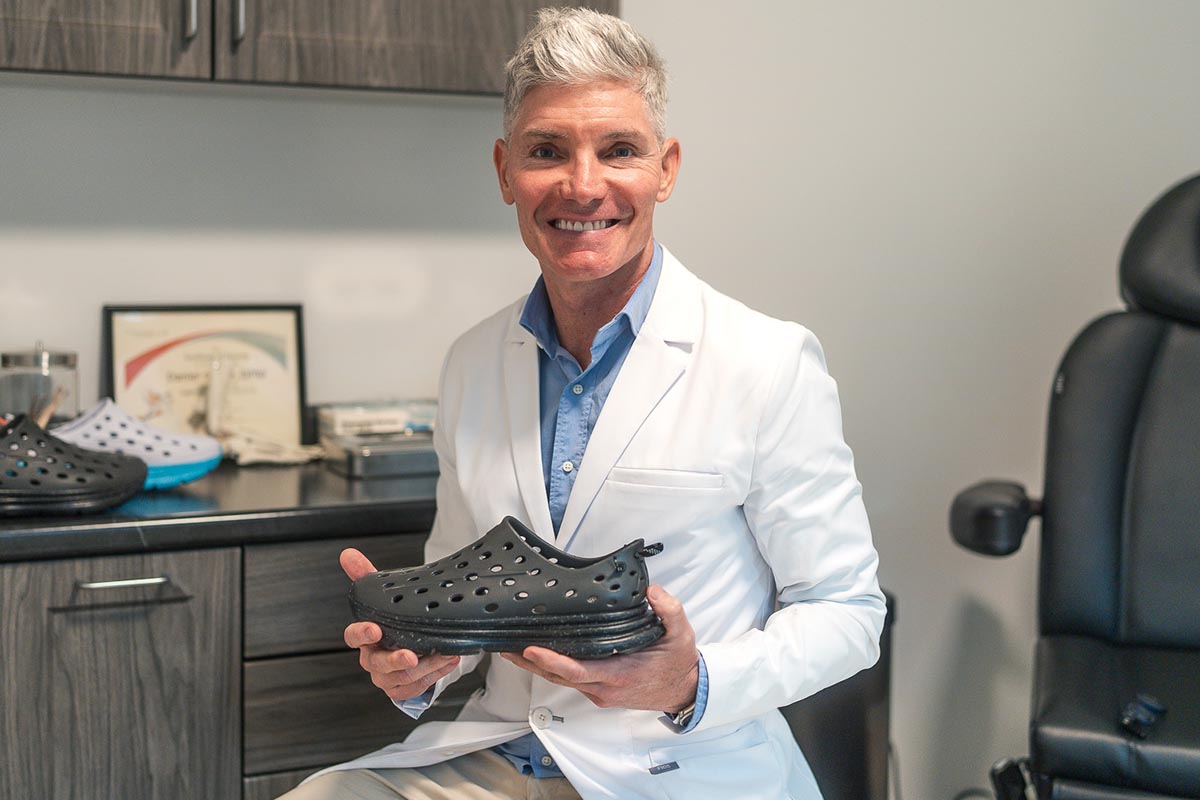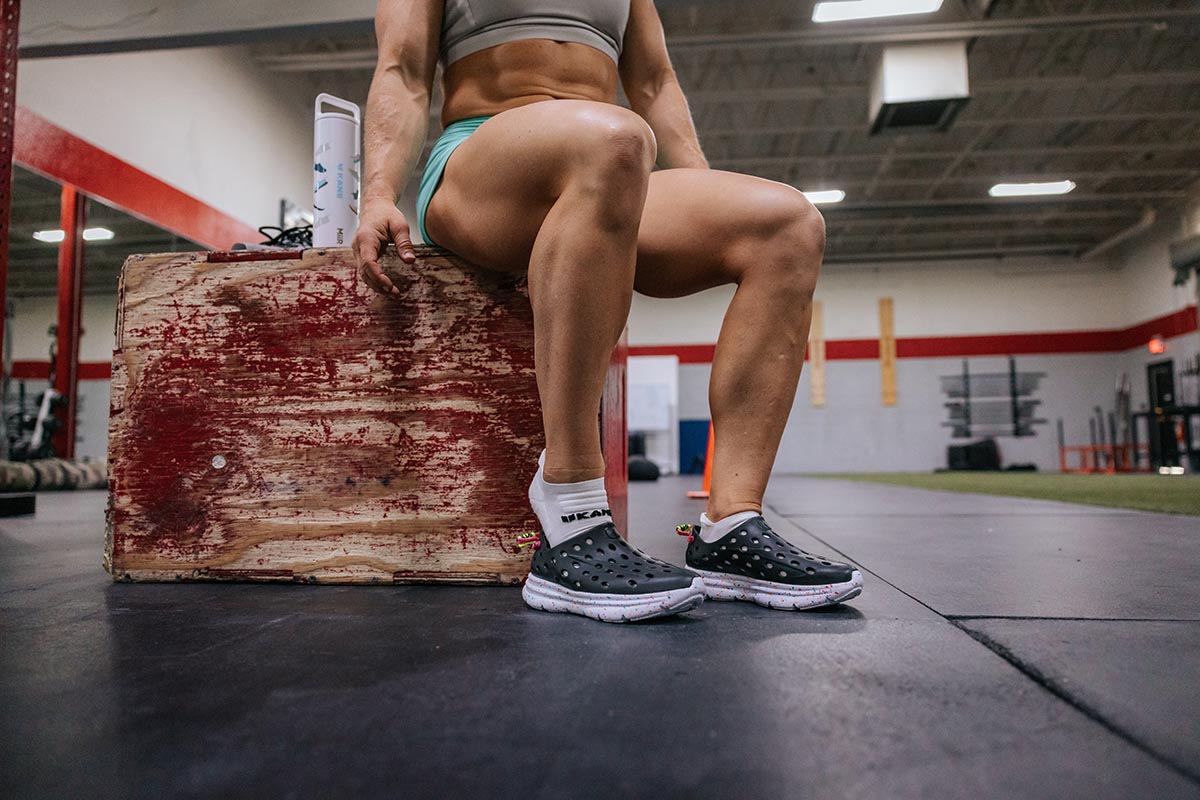Arch pain when running is a common issue faced by all sorts of runners. Whether you’re training for the Iron Man, or just going for a run in your neighborhood, arch pain of varying degrees is always a potential risk.
The arch of your foot does quite a lot for you! It supports the weight of your body, helps to absorb shock, and provides balance while you’re running. That’s a big responsibility for just the midsection of your foot. So it’s only natural that your arch may also be prone to pain, discomfort or even injury. Luckily, you can usually do something about it. Having recovery shoes in your rotation, for one, is a great step towards foot pain relief.
In this article, we’ll take a look at some of the causes of arch pain while running, as well as treatment and preventative measures to be taken.
What are the common causes of arch pain?
Plantar fasciitis
Plantar fasciitis is a common cause of arch pain in runners, and can become particularly aggravated by runners who have high arches or flat feet. This condition occurs when there is inflammation of the plantar fascia, a band of tissue that connects the heel bone to the base of the toes. Plantar fasciitis can also be caused or aggravated by wearing improper footwear while running, such as shoes that are old and overly worn, or shoes with inadequate support for the foot. Running excessively may similarly lead to pain in the arch of the foot, and could result in the development of plantar fasciitis.
High-impact sports or activities
The arches of your foot can become fatigued over time from engaging in high-impact sport or activities, like running. Since your foot is repeatedly hitting the ground throughout each run, this can start to strain the arch of your foot, causing pain and discomfort.
Muscle imbalances
Your feet are equipped with many muscles of various sizes. If the muscles in each foot are not equally strong, however, this can cause arch pain while running. Your foot may favor one side or the other, and can begin to roll inward or outward, putting undue strain on the arch.
Overpronation
This condition happens when the arches of your feet flatten more than they naturally should as a result of your running style. This puts excessive strain on the muscles, tendons and ligaments that support your arches, ultimately leading to arch pain. Since your arches need to be sturdy and stable enough to support your legs and body, overpronation can increase your risk of foot or leg injury.
Improper footwear
Improper footwear can be a real kicker while running. If your shoes don’t provide the support your feet, legs and frankly whole body need, your arches (for one) can suffer the consequences.
Wearing running shoes that are too tight or too loose can put extra strain on your arch. So trading in that ratty, beat up pair of sneaks for a new, supportive pair would be a wise move. Just make sure your new and improved footwear are also the right size and fit for your foot.
Overuse injuries
If you’re training too frequently without giving your body adequate recovery time, you can end up with an overuse injury (or more.) This kind of injury for runners can come in many forms, such as micro-tears or muscle inflammation, resulting in foot arch pain.
A few overuse injuries that can lead to arch pain include:
- Tendinitis (inflammation of the tendons) or posterior tibial tendon dysfunction (a progressive flat foot-related disease)
- Muscle strains
- Stress fractures (tiny cracks in the bones)
Disproportionately high arches
Otherwise known as cavus foot, this condition means exactly what you’d think - disproportionally high arches. Feet with this shape are not able to absorb shock as well as a foot of a standard shape, which can cause strain on your arch muscles.
Cavus foot is sometimes inherited genetically, other times by injury. Runners with this foot shape are prone to frequent or long term arch pain. Incorporating proper footwear and stretching cannot reverse this condition, but it can help ease the associated discomfort.
Stiff calf muscles
Some of the foot’s mechanics are, in a sense, puppeteered by the calf muscles. WIthout strong calves, the foot’s flexibility is restricted. Without adequately stretching before and after running, runners with stiff calf muscles can end up with arch pain.
Flat feet
Otherwise known as fallen arches, a flat footed individual has a collapsed arch. Any pressure put on their feet causes their arches to flatten and touch (or come close to touching) the ground beneath them. Naturally, this will cause strain on the muscles and tendons over time.
Morton's neuroma
Morton's neuroma is a painful condition affecting the ball of your foot, typically the area between your third and fourth toes. The tissue around the nerves thickens, which can not only cause localized pain and discomfort, but also affect your arches. Runners are particularly at risk of arch pain caused by Morton’s neuroma, given the repetitive nature of this high-impact activity.
Prevention and treatment of arch pain
Wear proper footwear
Running shoes
Kicking off your run in supportive footwear can be the make or break when it comes to arch pain prevention. When your running shoe of choice is supportive and cushioned, it helps to balance your body and absorb shock. Just ensure your shoe fits and secures your foot correctly, in both size and shape, to prevent your foot from sliding around inside the shoe.
It’s also important to note that running shoes do need replacing after a certain amount of wear, especially for avid runners.
Recovery shoes
Choosing a proper recovery shoes can ease certain aches after running and are a great tool to help manage arch pain. The best recovery footwear will comfortably reinforce your foot, and provide flexibility, breathability and traction.
Run on softer surfaces
To prevent arch pain, and even heel pain, while running, choose a softer terrain to tread on. This is much easier on the ligaments, tendons and foot muscles, and will make your run a lot more comfortable. A soft running path or park are great options!
Going for a run on soft grounding can decrease the amount of stress put on your feet, and make it less likely to roll your foot. Plus, you'll have more shock absorption underfoot. Arch pain running—be gone!
Combing high-impact with low-impact
It’s a good idea to give your feet a break without coming to a full stop. Cross-training is extremely helpful for that. If you include swimming or biking into your routine, you can keep active without putting all the weight and stress on your feet. Your arches will thank you.
Stretching and strengthening exercises
When you stretch your feet, you promote blood flow and increase flexibility, which in turn can reduce the risk of pain and injury.
Foot stretches that can be done at home to help stretch the arches of the feet include, but are not limited to:
- Toe curls/towel curls: While standing or sitting up straight, place a towel on the floor and scrunch the towel towards you with your toes. Hold, release and repeat.
- Foot rolls: Place a foam roller or ball under your foot and, while applying some pressure, roll it back and forth for a few minutes.
Strengthening exercises can help improve your foot health by increasing range of motion, reducing muscle soreness, and supporting your arch. A few strengthening exercises that can help strengthen your arches include, but are not limited to:
- Arch lifts: Otherwise known as “foot doming,” this exercise involves keeping your feet flat on the floor and spaced apart with your weight on the balls of your feet. With your toes and heels on the ground, lift your arches slowly.
- Single-leg stand: With your arms down by your sides, stand on one leg and lift the other leg off the ground, holding for a few seconds. Alternate legs and repeat.
Warm-ups
A solid warm-up is vital to preparing your body for any high-impact activity. Warming up before running can help prevent arch pain from starting in the first place.
The right kind of warm-up should include, but is not limited to:
- Dynamic stretching exercises like walking lunges, high knees, and butt kicks.
- Slow jogging will get the blood flowing throughout your body and to the muscles in your foot
Keep it cool by icing your feet
Applying ice is a fantastic (and cheap) method to relieve arch pain and reduce swelling. The cold constricts blood vessels and acts as an anti-inflammatory. You could use an ice pack, or put ice cubes into a plastic bag and place it under your foot. Just use a tea towel or other soft barrier to protect your skin, and ice it at intervals of 15-20 minutes max.
Gradual progression
If you’re starting to incorporate running into your routine, it’s key to gradually increase the intensity of your runs over time. If you go overboard too soon, you can suffer the consequences, which will delay your running program. Your body needs time to adjust and work up to certain goals, since running puts stress on your foot muscles and ligaments. Reducing the risk of injury and preventing arch pain are essential to healthy runs.
When to see a doctor for arch pain
If you’re experiencing arch pain that’s severe and persistent, it is likely time you should contact your physician for expert advice. This could mean going to physical therapy, or seeing an orthopedic surgeon for specialized medical treatment.









